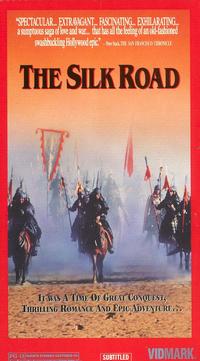Top Qs
Timeline
Chat
Perspective
The Silk Road (film)
1988 Japanese film From Wikipedia, the free encyclopedia
Remove ads
The Silk Road (Japanese: 敦煌, Hepburn: Tonkō), also known as Dun-Huang, is a 1988 Japanese film directed by Junya Satō. The movie was adapted from the 1959 novel Tun-Huang by Yasushi Inoue. The backdrop of the plotline is the Mogao Caves, a Buddhist manuscript trove in Dunhuang, Western China, located along the Silk Road during the Song dynasty in the 11th century.
Remove ads
The film was released in Japan and China on June 25, 1988.[2] It was chosen as Best Film at the Japan Academy Prize ceremony.[3] It is the 48th-highest-grossing Japanese film of all time.
Remove ads
Cast
- Toshiyuki Nishida as Zhu Wangli, a commander of the Xi Xia empire
- Kōichi Satō as Zhao Xingde, a student of Zhu Wangli
- Anna Nakagawa as Tsurpia, a princess of a Uyghur kingdom
- Tsunehiko Watase as Li Yuanhao, the Xi Xia emperor
- Takahiro Tamura as Tsao Yanhui
Reception
The Silk Road was the number one Japanese film on the domestic market in 1988, earning ¥4.5 billion in distribution income that year.[4] It was the third highest-grossing Japanese film up until then, after Antarctica and The Adventures of Milo and Otis, and remains one of the highest-grossing Japanese films.[5] As of 2013[update], the film has grossed a total of ¥8.2 billion in Japan.[6] In the United States, it grossed $123,959.[7]
Remove ads
See also
References
Bibliography
External links
Wikiwand - on
Seamless Wikipedia browsing. On steroids.
Remove ads

